(This old year is gasping its last breaths, but before it expires our friend Gorger from Norway brings us one more collection of 2017 releases that we haven’t previously reviewed. To find more of his recommendations, type “Gorger” in our search bar or visit Gorger’s Metal.)
As this year is ebbing out fast, I’m presenting another four reviews. Most of them are so long, it’s inhuman to compile them like this. The music won’t provide much compassion either. Deal with it, and let’s cut straight to the chase.
AD CINEREM – ALBUM
Remember Frowning? I sure do! It’s (still) my favourite sleep medicine of the year (meant in the best way possible), as is evident in the complaint department comment section of that excellent review. The (one) man behind Frowning, German Val Atra Niteris, is also part of the duo Ad Cinerem, where Val handles guitars, drums, bass and synth, while partner Hekjal does vocals in addition to more guitars.
The young duo from Dresden, about halfway between Berlin and Prague, have a flair for melodies and structures, one that I instinctively knew I’d come to enjoy. Allow me to present Shadows of Doubt, the band’s first album after a demo dropped in 2015, the year after their formation.
The music they play has elements from ultra-doomed black/death played in mid-tempo and lower paces with a strong whiff of funeral. Let’s call it blackened funeral death/doom, shall we? The atmosphere is dejected and resigned, but also ominously bitter and disturbingly hateful. The structures of the songs are thoughtfully constructed and the music flows naturally through varied emotional moods.
When the music doesn’t seek out the most tranquil atmospheric landscapes of mourning underneath the weeping willows, heavy riffs casts their resounding echo, and thundering vocals growl and rasp their cursed message. Like tides and unstable rough weather, the music changes constantly with two guitars that in an impressive manner produce spiritless melancholy with harmonious patterns and comfortable melodies.
The sound is deliciously hypnotic, with booming sound. Bass and rhythm guitar resound darkly, proficient percussions sound lifelike, and the brighter tones of guitars float like an elegant but disillusioned lone swan on the reflective surface of the water after an unintentional but deadly discharge during last season’s duck-hunt. Val Atra Niteris has handled every step of the production himself. The sound is dynamic (DR11), rich, and comfortable, and suits the music perfectly. He has even made that gorgeous cover art. Impressive!
Shadows of Doubt is hardly a musical work capable of being described with just a poor vocabulary, but rather a dizzying journey through a merciless feeling of misery, hopelessness, and disillusionment. The guitar’s continuous ability to create beautiful hooks, and the clever changes of the music, seem carefully planned down to the smallest detail. I nevertheless don’t get any feeling of the music being calculated in any way. Every single coherent transition floats entirely naturally.
This is a work that oozes of quality in every aspect. Including the most important of all. The writing process. Shadows of Doubt is a very pleasurable achievement that will surely appeal to fans of beautiful and dark gloominess.
Shadows of Doubt was released independently back in January.
PERISHED – KARK (Re-release)
Perished was a black metal band from Hommelvik, a small town about 20 km east of Trondheim, Norway. They were active from 1991 to 2005, and released two demos, two EPs, and two full-lengths. I’m not particularly familiar with the band, but on Kark, their debut album from 1998, they operated in black landscapes colored by viking aesthetics adorned with classicistic means. Kark was reissued with a bonus song in 2015, but only on tape, limited to 200 copies. This year’s re-release offers the same bonus track, as well as the two songs that formed the self-titled EP Perished (1996).
The intro is an acoustic thing not unlike Empyrium, with suiting double bass. The music that follows has sharp guitars, fiery percussion, and rasping vocals, but also a Nordic melodic touch. The music has some common features with bands like Ulver and Borknagar around ’95-’97. A touch of Enslaved can also be traced, as well as elements that would later be picked up by bands like Windir. In addition, a symphonic twist brings associations to, among others, Thy Grief and Grievance. The album reminds me of something more concrete, but my memory refuses to play ball. Hints of contemporary Troll and Ancient can also be mentioned.
Perished was a quartet when Kark was recorded in Skansen Lydstudio in October 1997. Three of the members later appeared in bands like Bloodthorn, Wurdulak, Woods of Infinity, Laserguys, and live for Whoredom Rife, while the last man was never heard from again. The synthesizer was handled by session musician Knut Erik Jensen, who later recorded some accordion for Lumsk. Ihizahg, who guested on guitar, became a full-time member afterwards, before even he later appeared in Bloodthorn and Wurdulak et.al., and also Images at Twilight.
The sound is as it should be, fittingly unpolished and primitive while at the same time retaining its raw essence with rich punch and a nostalgic euphonious sound of the late nineties.
The last song of the original album, Renheten og Gjenkomsten, differs slightly from the rest of the material by offering less melody and rawer, hastier material. The bonus song A Landscape of Flames follows in this footstep. This one was previously unreleased apart from on the previous reissue. The songs Kald Som Aldri Før and Gjennom Skjærende Lys stand out even more production-wise, with harsh, cold sound, even though the songs have the same melodic touch as the lion’s share of the album, with a sympho-folklore ethos resting like a veil above sardonic riffs and thorny vocals.
Needless to say, this almost 20-year-old album is something of a classic within its genre. After Kark, Perished released the EP Grim (2000) and the album Seid (2003) before splitting up a few years later.
Kark was released by ATMF in late June.
NORTHERN PLAGUE – SCORN THE IDLE
Some albums just click with me instantly. Such might of course simply turn out to be just catchy, audible available stuff that fades quickly, but trained ears should likely reveal such cheap tricks pretty fast. When I accidentally came across Scorn the Idle, I instinctively knew that I had found precious metal, and after a few minutes, I was also quite certain that this was solid metalworks with a lasting quality that would not lose its luster.
What I wasn’t aware of at the time, though, was that I had reviewed the Poles’ debut Manifesto three and a half years earlier, when I wrote an enthusiastic piece on it, praising its impressive qualities. (The quality of my memory is rather questionable.)
The band’s extreme metal is a cross between black atmosphere and deadly riffs, harsh vocals and crushing rhythms, powerful punch and majestic sensations. Stylistically, the band can thus be placed in the same pigeonhole as their countrymen in Behemoth and Hate, but the similarity is far from striking. Northern Plague sounds less like their compatriots this time around. They play more on hateful atmosphere than magnificent grandeur, with an airy, dynamic expression sprinkled with detailed technical finesse.
The band is nowhere near what we know as technical metal, but the technical skills can’t be denied. It’s probably a bit wrong to say that drummer Damyen (Unearthly-live) in particular excels, as he ain’t alone in doing so, but the percussion is nevertheless especially delightful. This kind of almost progressively varied artistic craftsmanship is actually quite out of the ordinary. The guitars also deliver some brilliant strokes of genius. In the song Man of Glass, both parties give each other room for a bit of experimental playfulness, and even the bass gets to shine beyond the norm.
Instead of just resorting to the usual ingredients, the recipe is spiced up by adding a pinch of dissonant cayenne pepper. A few drops of grapefruit are added to the rhythm now and then, while the guitars at times get a splash of liquor to jazz up the dish. Ingredients are from time to time borrowed from different areas. Such as the tincture of deathcore one can trace in some of the rhythms. The Day After gives an atonal symphonic sensation mixed with a calm touch of Pink Floyd, while Drowned — after a series of more or less kaleidoscopic and raw songs — again blends comfortable numbness into the mix, this time in a heavier (and strikingly beautiful) composition with the consistency of death/doom. Blended in a tasteful manner, the additives ain’t exaggerated unreasonably. They add some intricate bitterness that prevents the rich stew from entering one hole and exiting the other.
If the last sentence gave some unpleasant mental images: good. Quality-music should preferably leave an aftertaste, memories for thought, a mental echo that resonates with the listener, and most preferably; a taste for more. Scorn the Idle refuses to go quietly from ear to ear without shaking up the listener along the way. As a kind of benign nuisance, the music teases the listener quite innocently, making the music and its charming nature stick in the mind. It invites concentrated listening, and gives something in return. The price of diversity is that the music’s ability to please the listener might vary slightly from moment to moment. That, however, is a small price to pay for a solid artistic workmanship that glows with passion and artistic freedom.
Scorn the Idle may not be a spotless album, and it also splays slightly, but I like the vast majority of the courses it takes while it sniffs around like a blood dog and turns every stone as a curious chimpanzee. I like the forceful blow in the slightly sharp, yet bass-heavy and booming sound. I like the overall identity the album develops after a dozen spins. And the word “like” is really a modest understatement. This is an album I will recall, and that I will surely come back to again. A subjective full score, although there’s no lack of objective justification. Ravishing!
Scorn the Idle was released independently in late July.
SAQRA’S CULT – FORGOTTEN RITES
Saqra’s Cult is a new and hopeful band from Belgium. Only he in hell knows when the band was started, though. The band dropped the demo Initiation to Forgotten Rites in 2015. An apt title, as it contained two songs from this album. This year, the band are now ready to invade the sphere of your pitiful shack and perform these lost rites.
The band have every reason to be proud, for with this debut they deliver a black occult ritual that stands out well from the rest of the dregs of society. The band consists of two gentlemen. Disgusting Semen on guitar and Alkhöloïkh on drums, both of whom also play in Maleficence.
The Belgian duo don’t save the best for last, but play one of their strongest cards right away. The song Solemn Sacrifice last for ten minutes and occupies one quarter of the album’s total duration. It spends a few minutes building up the mood, using sounds that give associations to hostile native Americans in the Amazon rain-forest, infamous for their human sacrifice. Additional atmospheres from the South American jungle are also found in Uku Pacha, where something tells me that the medicine man has smoked too many strange plants and herbs, gone insane, and transformed into a malign necromantic witch doctor.
Solemn Sacrifice soon enough turns to gloomy riffs and thundering war drums topped by sharp, cutting black vox with a reek of exotic witchcraft, and an occasional spine-chilling witching shriek. Alternating (but not exaggeratedly) rhythms and memorable riffs accompanied by deep resonating background chanting set the agenda. The vocals must be emphasized, although I can’t say with certainty who is shrieking. The thorny screams are superb, while the voice’s transitions to deeper and more distorted intonation also create diversity and a sense of barking madness. I also really have a taste for the clarity that appears in the articulation. Outstanding!
The music is generally intense, black, and glowing like hell-fire, with rapid passages and sick fucking drift. Still, the music has a form of spaciousness and room for moods, whilst sticking out both in sound and performance. There is something distinctive about the guys’ expression that can hardly be described with words. Something about the music makes me think of Cultes de Ghoules‘ peculiar soundscape and distinctive atmosphere, without the two sounding directly similar. Perhaps the twisted and distorted vocals are to blame? In any case, I can’t come to think of any apt reference bands.
My association might also be due to the fact that the sound of Forgotten Rites also has a distinct individual uniqueness. The sound is a bit peculiar, but it’s also refreshingly luscious. The drums and the exquisitely serrated vocals sound stunning, and the guitars are equipped with a peerless outlandish sound, especially when the guitar’s whammy bar is used as distinctively as at the beginning of Mesak. That the band come from Belgium is easy to forget. An undefinable occult mood, as of Hindu idolatry and demon worship or belligerent voodoo, spreads like a toxic chemical agent in the ventilation system. Last but not least, it’s delightful to play the album loud! Every song has a dynamic range of DR9, except for the first song that arrives at DR11.
Saqra’s Cult offers magic mysticism for 40 minutes, and I’ve long since lost count of the number of spins I’ve enjoyed. With wonderful instrumentation, deranged vocals, good material, quaint sound, diversity, dynamics, and idiosyncratic originality, this is a crystal clear top-ranking in my non-humble opinion. Killer album!
Forgotten Rites was released by Amor Fati Productions in early June.
MESMUR – S
I was rather surprised to not find Mesmur covered on NCS. Especially because the band’s self-titled debut, released on code666 in December 2014, was fucking monumental. Thus it’s not without a certain excitement I get started with the sequel, the album with the short and succinct name S.
Something that ain’t short and succinct are the songs. The debut’s five songs lasted for a total of 50 minutes. Only four songs are presented this time around, but the total duration is shifted up to 53 minutes. The first three songs also clock in at a quarter of an hour on average.
Speaking of the debut. Why not simply kick off with a few words about 2014’s Mesmur.
Fans of sluggish, syrup-slow, heavy and dejected funeral death/doom should sharpen their ears and welcome the debutants in Mesmur, and their vision of absolute misery. For as the press release declare – Mesmur aims to capture the sound of a world that was sentenced to doom and destruction from its very onset.
Doooooooooooooooooooooomed… It’s!
The five tracks range from 8.5 to 12.5 minutes and the total duration passes 50 minutes with good margin. Although the guys drag their feet in mud up to their knees when it comes to pace, they put in enough melody and rhythm to keep things moving in the mud. Sometimes slow and killing as a beefy constrictor that has coiled up around you, that gradually tightens its solid grip, and that takes its time. The melodies are good and constantly changing, producing a kind of terrified delight or fearful joy caused by its complete lack of light at the end of the tunnel, or an end of the everlasting mine shaft whatsoever. Here is no hope, only damnation. Beautiful, life-absorbing, hypnotic, fatal demise.
It is an incredibly strong debut this quartet has come up with.
If an extreme offspring of doom is your passion, do yourself a favor and check this one out!
The band’s stated objective is to capture the sounds of a world that was doomed from the beginning, something they’re doing from the outside this time, as their crushing claustrophobic funeral doom on S has a distinct ethereal feel of outer cosmos.
As last time, heavy, slow doomsday poems are served with sorrowful moods, and all hope annulled at the stroke of a pen. However, it takes some time to get the melody’s despondency under the skin, but when the misery fortifies its position, all hope in the cosmos is lost. The stars draw their last breath, some in a breathtaking spectacle, leaving black holes that’ll stay behind to clean up the mess long after the last heartbeat is registered in the universe. Other stars simply cave in and collapse. The light goes out and they die out quietly. Again, an all-encompassing destructive symphony is presented with beautiful but deeply tearful compositions, written as a tribute to the end time.
My biggest critical remark is the sound, where something seems to be amiss. As a layer of cosmic noise caused by gamma radiation from the nuclear solar supernovae as the neutron stars detonate, radio interference settles over the otherwise pleasurable resounding soundscape like a blanket sparkling with static electricity. I thought (or hoped) that this was just an audio-technical glitch. I tried with other headphones. I even downloaded the promo from another promoter. But the crackling persisted. This insistent grating harshness creates a lot of sonic friction in the opening Singularity in particular, and pats me against the grain of my hair with sharp fingernails.
I doubt that the dynamic range alone is to blame, but I notice that the dynamics of the production have dropped from alright DR7 on the debut to weak DR5 this time. The band’s mastermind Jeremy L is, by the way, the one responsible for mixing and mastering both albums.
Gradually, I managed to ignore this frustrating disturbance, just as you would eventually no longer notice a ticking clock, a noisy computer fan, or a whizzing ventilation system. In addition, the effect is fortunately not omnipresent. It’s muted a great deal after the first song. All that remains is resounding doomsday prophecies transmitted from an unknown galaxy and picked up by SETI’s radio telescopes after traveling for eons through the vast interstellar void.
Mesmur is something of an international constellation. The protagonists are the Americans Jeremy (guitar and synth) and John D (drums), both of Dalla Nebbia. The guttural sigh of discouragement is performed by Australian Chris G from Orphans of Dusk, while former bassist, Norwegian Aslak Karlsen Hauglid, has been replaced by Italian Michele M.
The last track, instrumental S = k ln Ω, is almost for an outro to be regarded with its barely seven minutes. The title alludes to Boltzmann’s equation. I’ve tried to wrap my head around this, but between the incomprehensible formula, my limited intellect, and the heavy music, a triangular vacuum is formed, resulting only in a high pulse rate, shortness of breath, and nose bleeding.
To sum it up, I still favor the delightful first album Mesmur by a notch, but it should be said that it really blew me away, and that S is also a highly enjoyable journey amidst stellar darkness and astral vistas.
S was released by Solitude Productions in September.
THE SPIRIT – SOUNDS FROM THE VORTEX
Germany’s The Spirit is a newcomer on the market, but little and nothing indicates that the band is a debutant. The band came out of the casting mold two years ago, and have since then chiseled out a solid work. Sounds From The Vortex blends black and death into a melodic spectacle that drags the mind back in time. The band themselves claim to have created something that should be able to appeal to fans of classic No Fashion releases, and I can agree with that description.
The Spirit has a spirit, a sound, a breath of early melodic extreme metal, and although the similarities are not significant, I get some vibes of bands like Dissection and Immortal around At the Heart of Winter. The style is mild, without becoming too gentle, for their mid-tempo black/death has rhythms and drive that’s easy to like. It is nevertheless the guys’ flair for good melodies and structures that to the greatest extent makes a mark.
Every single sequence through these 38 minutes might not be equally engaging, but the entirety can be said to have remarkably good song-writing overall. There’s nothing to complain about regarding the performance either. The recording is tight and the sound is good. The quartet uses the classic instrument delegation, in addition to the vocalist also handling the axe. Chasing drums and windswept riffs emerge loud and clear, while black vocals of the distinctly audible, articulated type lay on top.
For being the first album, Sounds From The Vortex is an impressive vista. And it’s not just “good for being a debut”. Listen to The Clouds of Damnation, for instance, and enjoy the diversion in fluctuating and oscillating guitars and the whipping percussions, or Illuminate the Night Sky, with its architecture, stripped-down sequences, and moods of the past.
Sounds From The Vortex was released by Eternal Echoes in October.

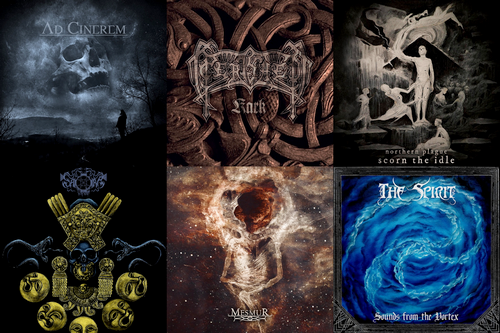
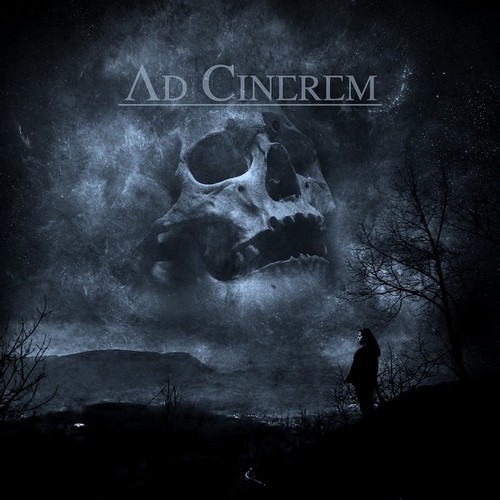
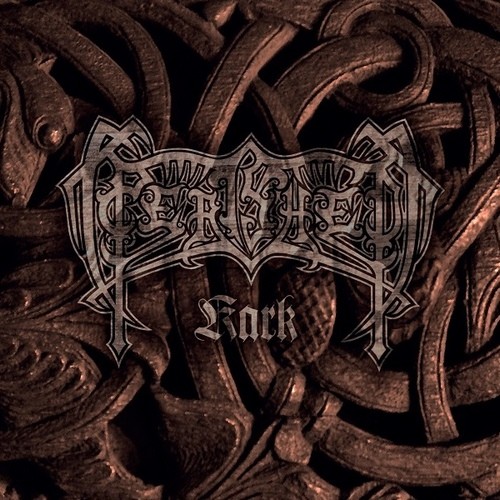
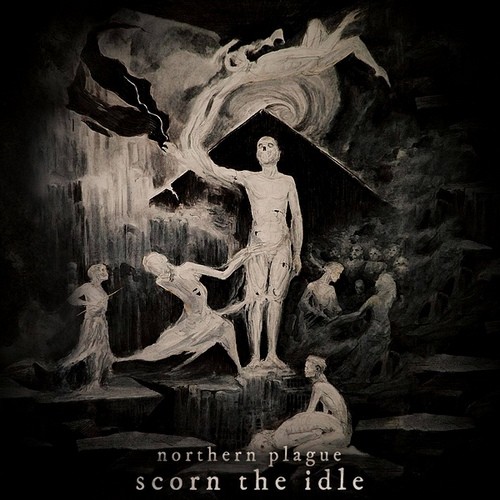
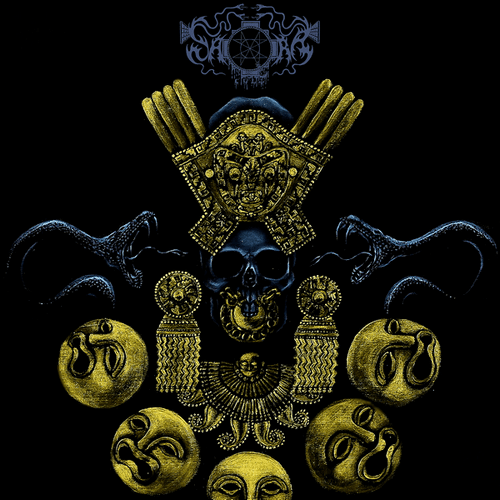
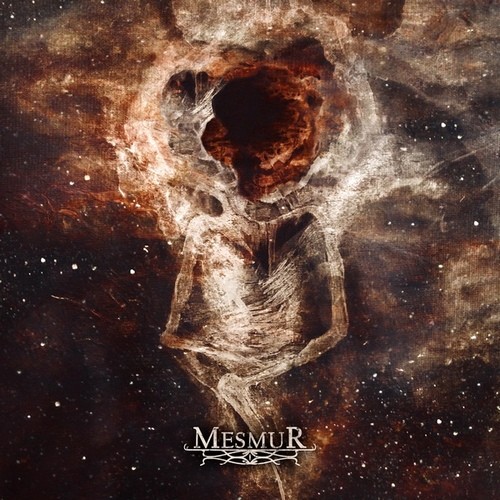
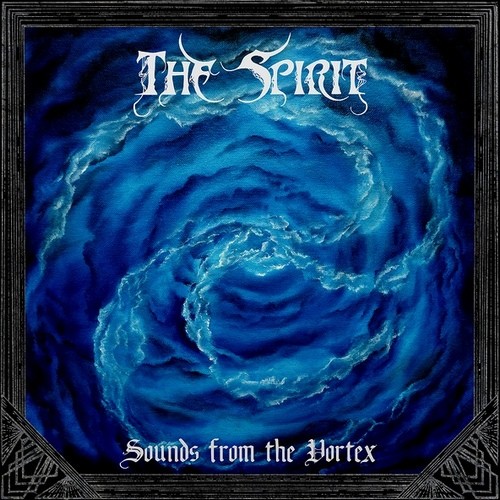
The Spirit put out an amazing first release this year. I see them getting even better in future efforts.
That’s another one I really need to catch up to.